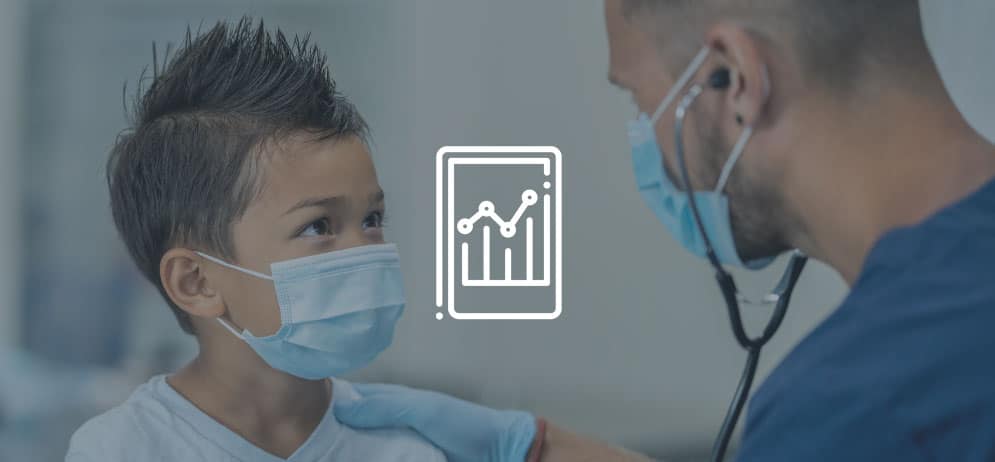The Random Moment Time Study (RMTS) is a critical element of both school-based Medicaid Administrative Claiming and Cost Reconciliation and Settlement. However, each state’s implementation of the RMTS determines how it is administered and to what extent individual districts can impact the results. This guide will help you understand what the RMTS is, when it’s used, and to how you can maximize your results.
What is a Random Moment Time Study?
The RMTS is a statistically valid sampling methodology that is used to determine how much time eligible participants spend performing all work activities, and how that time is allocated between education, direct services, and administrative functions.
In the RMTS, participants are matched to random moments in time during the quarterly sampling period and must report what type of activity they were performing during their selected moments, based on a set of codes. The time study results are then used to determine the overall percentage of time spent performing reimbursable activities under both the School-Based Medicaid Administrative Claiming program and Cost Settlement program.
School-Based Administrative Claiming (SBAC) defined:
SBAC is a federal Medicaid reimbursement program that allows districts to recoup federal funds on a quarterly basis for Medicaid administrative outreach and support activities conducted, such as outreach to Medicaid eligible children and families, assistance with the Medicaid application process, coordination with other health care providers, and health-related training.
Cost Settlement / Cost Reconciliation defined:
Cost Settlement is an annual Medicaid reimbursement program that allows districts to recoup federal funds for the actual Medicaid allowable costs for providing health services to students with disabilities. The costs are reduced by any Medicaid funds received throughout the year through the Direct Service (otherwise known as Fee-For-Service) claiming program. This program allows districts to receive additional federal funding to assist in covering costs beyond the payments received through Direct Service Billing through the year and can be very beneficial to districts in states with low rates of reimbursement for billable services.
How does the RMTS process work?
- Develop participant list and create sample moments: Each quarter staff who may perform Medicaid reimbursable activities (administrative activities and/or direct services) are identified and included in the sample pool. From the sample pool, names are randomly selected and paired with random moments during the participants’ working hours to create “sample moments.”
- Complete sample moments: Participants complete their sample once the specified moment has passed. There is a federal requirement to meet an 85% sample completion rate for the RMTS to be valid.
- Code moments: In some states, such as Florida and Pennsylvania, rather than selecting the appropriate code, participants are required to write an Activity Description that describes the activity they were performing at the time of their moment, and a central coder is responsible for coding the moment based on the description.
When writing this statement, it’s important to include the following information to ensure the coder has enough information to determine the appropriate code:
-
- WHAT you were doing
- WHO you were with
- If necessary, WHERE and/or WHY you were doing the activity
Activity descriptions should not include proper names of students, staff, or parents.
- Calculate claimable percentage: Based on the results of the time study a claimable percentage is calculated, which is used when developing the administrative claim and cost settlement report.
How can you impact your RMTS results?
How much control you have over the RMTS depends on how it’s administered in your state.
- State-administered RMTS: If your RMTS is conducted statewide, while as a district you don’t have as much control on the results, you should focus your efforts on:
- Making sure the state agency is adequately qualifying all participating districts.
- Hitting the 85% completion rate for all moments in your district.
- Ensuring your time study participant list is up to date, so you can include all eligible participant costs (e.g. salaries/benefits) in your Administrative Claiming and Cost Settlement cost pools (as appropriate).
- Monitoring changes to the claimable percentage to ensure it’s not trending downward, and if so, advocating to the state to understand why.
- Keeping up with changes at the federal level that can affect what’s claimable and enacted in your state and ensuring federal regulations are interpreted correctly.
- Keeping a record of all your time study information. While this responsibility may also fall on the state vendor, it’s always best to keep your own records to protect your district and your funds should you be subject to an audit.
- District-level or consortium-administered RMTS: If your RMTS is conducted at the district-level or through a consortium/group of districts, in addition to the items above, you can focus on some other areas to maximize your RMTS.
- If your RMTS methodology requires participants to select the code, proper training is necessary to ensure participants understand which codes are claimable and non-claimable to ensure they select the appropriate code. This is not just necessary to maximize your results, but to minimize audit risk as well.
- If your RMTS methodology requires participants to write an Activity Description, it’s important to follow the “What, Who, Where, and/or Why” guidance above so the coder can accurately code the sample, without the need to request clarification. You should also validate coding as necessary to correct staff samples that are not accurate.
- If you’re part of a consortium, make sure the consortium fully understands the program and has a claimable percentage that is in line with others in the state.
